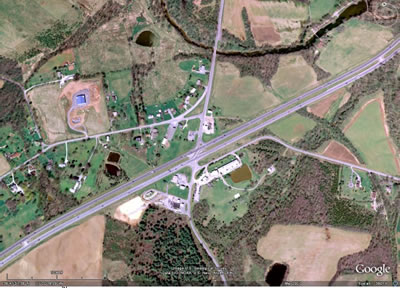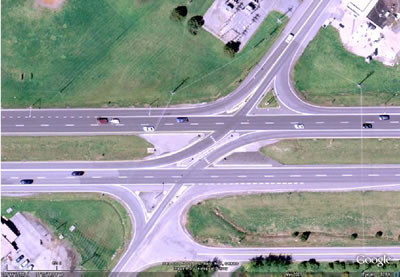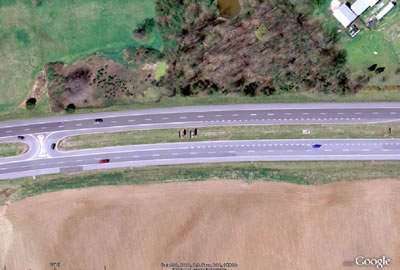U.S. Department of Transportation
Federal Highway Administration
1200 New Jersey Avenue, SE
Washington, DC 20590
202-366-4000
Federal Highway Administration Research and Technology
Coordinating, Developing, and Delivering Highway Transportation Innovations
| REPORT |
| This report is an archived publication and may contain dated technical, contact, and link information |
|
| Publication Number: FHWA-HRT-11-067 Date: June 2012 |
Publication Number: FHWA-HRT-11-067 Date: June 2012 |
Compared to grade-separated limited-access facilities, four-lane divided highways are an economical design for increasing the capacity of rural highways. Four-lane divided highways can also increase safety compared to the two-lane rural highways they often replace.[1,2] A study conducted by the Nebraska Department of Roads comparing two-lane undivided rural highways to four-lane divided highways found that the four-lane divided highways had markedly lower rates of sideswipe, rear-end, and head-on collisions. However, right-angle crashes were 71 percent more frequent at four-lane divided highway intersections than at two-lane undivided highway intersections.[3]
The restricted crossing U-turn (RCUT) intersection, which is also called the J-turn or superstreet intersection, is a promising treatment to mitigate right-angle crashes where two-lane minor roads intersect with rural four-lane divided highways. This design usually permits left turns from the divided highway onto the minor road but restricts the minor road to right turns, which may be followed by a U-turn for left-turn and through movements. Direct left turns from the highway, if allowed, are made from channelized directional-median openings. At many RCUT locations, the U-turn median openings are also directional. Figure 1 shows the RCUT that was observed in this study. A closer view of the channelization at the main intersection is shown in figure 2, and a closer view of the channelization for a directional U-turn is shown in figure 3.

Source: Google®, U.S. Geological Survey, Data SIO, NOAA, U.S. Navy, NGA, GEBCO.
Figure 1. Photo. RCUT intersection observed in this study.

Source: Google®, U.S. Geological Survey, Data SIO, NOAA, U.S. Navy, NGA, GEBCO.
Figure 2. Photo. Channelization for left turns from the highway and right turns from the minor road.

Source: Google®, U.S. Geological Survey, Data SIO, NOAA, U.S. Navy, NGA, GEBCO.
Figure 3. Photo. Directional U-turn channelization at the RCUT observed in this study.
One objective of this study was to observe an operational RCUT on a rural four-lane divided highway to evaluate its safety and operations from a human factors perspective. The observations were intended to support design guidance for future RCUT designs. To provide perspective, observations were also made at a nearby conventional intersection on the same corridor.
In particular, the observations focused on the following:
A second objective was to perform crash analyses to examine the effects of conversions on conventional intersections to RCUTs on two rural high-speed divided highway corridors in Maryland. These analyses focus on nine RCUT intersections that were deployed in Maryland between 1998 and 2003. Six of these intersections were deployed on U.S. 15 in western Maryland, and three were deployed on U.S. 301 on the Delmarva Peninsula in eastern Maryland.